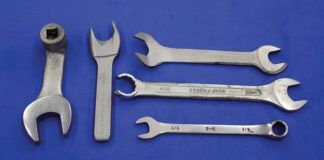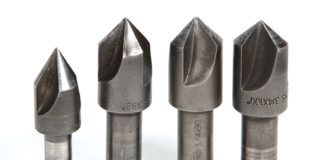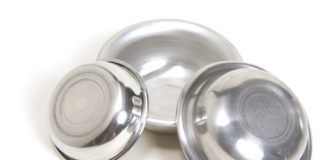For Kris Shipler this Falco is far more than an airplane. It is, 13 years after first flight, still a living embodiment of her father, John Shipler, who constructed it from scratch. And yet this thumbnail sketch is just the beginning of the story, not anywhere near a complete encapsulation. Tucked into a spotless hangar at the Chino, California, airport-why does everything seem to happen at Chino?-this Falco is both flown regularly and maintained to like-new condition by Kris and her husband, Paul, a former auto detailer who obviously knows every trick in the book.
It is an airplane that nearly did not come to be.
“I grew up with my dad, in a mans world,” Kris says today. “He raced cars, and was into aviation; I grew up in that environment. To give you an example, for a time we lived in a mobile home with airplane wings hanging from the ceiling. This was normal to me. But I never thought about getting my license until Dad started the Falco.”
In the end, it took John 10 years to finish the Falco. “Two years before he completed [the Falco], his health deteriorated and the FAA didn’t want him to fly,” Kris says. “He wondered, What should I do? Should I finish the Falco, or sell it? I said, Dad, finish it. Somebody will want to buy it as a completed project if thats what you decide to do. As he was getting close to finishing it, I asked him, If I get my pilots license, you can fly it, right? I thought we could have some really good years together in the Falco that way. It turned him around and brought a lot of joy back. And, in the end, we did have great times together flying the Falco. Getting my license for him was probably the hardest and the best thing Ive ever done.”
Enabling her father to complete the Falco rewarded Kris in many ways. “He always had me around for the annuals, teaching me how to do safety wire,” she says. “The people I met as I flew the Falco, and those here at the airport, have made this one of the best experiences of my life.” A picture emerges of a renewed relationship surrounding this svelte Italian design. Kris loves the airplane for what it is as well as for what it represents. “It fits me really well, fit us both, and is a delight to fly.”
John was immediately rewarded for his workmanship. “The Falco flew on Fathers Day in 1995,” Kris says. “I had not finished my license, so with another pilot he took it to Oshkosh and won an outstanding workmanship award.” The sticker remains on the sleek Nustrini canopy.
It was not Johns first project. “He built a modified Skybolt that flew in 1979,” Kris says. “He loved to do aerobatics, but as he got older he wanted something faster, something to let him scoot across the sky. He did a lot of research and had been looking at the Falco for some time. He bought the plans-I believe they were blueprints at the time-thought about working with wood and began to think, I can do this. Once he started, he took the side of the garage out and built a dolly so he could move the Falco around. It really changed from a two-car garage with a washer and dryer.”
And yet it was also a family affair. “We varnished everything inside,” Kris says of the all-wood Falco. “It was a lot of work, but he wanted it done right.” Moreover, its clear that John paid attention to details. Kris loves to show off the battery box, of all things; its under a hatch behind the baggage area. A thin wood ring locates the bottom of the battery in the well. You might expect this piece to be simply cut and bonded into the floor of the cell. Instead, it has graceful tapers, thin around the corners and thick along the two long sides of the battery, perfectly placed, sanded to perfection, glossy under a smooth coat of varnish. If the man took this much trouble with a battery ring, imagine what he did with the mainspar.
Eventually, when it was time to put the tail on, the Falco was moved out to Chino and work completing it took place. “We had a big to-do about the paint scheme, eventually,” says Kris. And, after a lot of going back and forth, “he decided on the Modena scheme,” says Kris, which is elegant in its simplicity. Local pilot Jerry Scott took N513JS up for the first time. Twenty-five hours later, Phase I completed, John and Kris began flying together, which they continued right up until he passed in June of 1998.
Meet the Machine
Stelio Fratis status among progenitors of homebuilt aircraft is fairly unique in that he is a professional designer, accustomed to creating certified projects. He assisted in the design of several sailplanes at Milan Polytechnic and, after World War II, began his career as a freelancer, creating designs for others to manufacture. His credits include various sailplanes, motorgliders, early military-style jets, a four-seat, Piper Apache-like twin, the seminal F.8 Falco and its follow-on SF.260, both of which are low-wing two- and three-place aerobatic piston singles.
The machine that John Shipler spent a decade building is not a lot different from the first Falco to spring from the fertile mind of Frati. The prototype, fitted with just a Continental C-90, flew in 1955, but the production model would have a 135-horsepower Lycoming O-290. Aviamilano built 10 of the early models, which also featured a larger wing, along with a handful of 150-hp variants. Finally, a 160-hp version was produced by famed motorcycle maker Laverda.
Most pilots today recognize the sleek shape, thin wings and graceful canopy of the SF.260, a much larger, all-metal airplane designed for aerobatics and
military training. While the two are similar, the SF.260, with its honking six-cylinder Lycoming, is slightly bigger, heavier and arguably less wieldy. It also lacks the wood Falcos smooth wing and simple, graceful wingtips; the SF needs those tip tanks to feed the thirsty IO-540.
The Falco, by comparison, is a lighter, more lithe design. Intended to use a “mere” IO-320 or IO-360-the
latter with blisters on the upper cowling to clear the wider cylinder heads-the Falco reflects a philosophy of economic design, a reminder of a time before it was fashionable to shove the largest possible engine into the smallest possible airframe.
Wood Rules
Natures own composite was the material of choice for many pre- and post-war aircraft because of the difficulty obtaining aluminum as well as the cost. As the Falco is currently kitted, the airframe is principally aircraft-grade Sitka spruce and birch plywood. When you purchase kit segments from Sequoia Aircraft, the major structural members are preassembled, including the wing and tail spars, wingribs and fuselage frames.
The many pieces of wood are glued together-hows that for a one-line simplification of some 3000 hours work?-and skinned. The final layer, if you will, is actually a very thin layer of 2-ounce fiberglass cloth wetted with West System epoxy. Intended solely for moisture protection, this last step replaces such processes as fabric and dope, as was used by the Bellanca factory for its wood-winged production models. Moreover, the final fiberglass layer provides a certain degree of freedom for final finishing to get a composite-like smooth finish, though the factory naturally warns against excessive filler adding weight.
Earlier Falcos used fabric-covered flight controls, but now they’re the same thin-plywood skin covered in fiberglass as the rest of the airplane.
A Conventional Design
As part of the complete kit, the current Falco comes with steel landing gear, the mains on a trailing link supported by a soft shock that allows the airplane to wander the ramp in a slightly drunken wing rock. It feels like a 56 Cadillac. Generally, though, the Falcos systems are conventional. The flaps are electric, operated by a freewheeling jackscrew; no limit switches are necessary. A single electric motor turns three long jackscrews to raise and lower the landing gear. The control system comprises a pushrod from the dual sticks back to a short bellcrank and dual cables to the elevator horn. Similarly, the ailerons use a combination of cables and sturdy pushrods; the rudder is connected directly to the nosewheel for steering. Manual trim is the standard deal, using a cast wheel between the pilots and turning a jackscrew/cable combo to the single tab.
A quick aside about this system says much about Fratis (and, for that matter, Sequoias Alfred Scotts) penchant for detail: The trim wheel is geared perfectly. It moves with a fingertips pressure to make extremely fine adjustments to pitch trim, yet can be palmed during the very few phases of flight when you want to make larger trim changes. This is no “thats about right” system.
Perhaps the only oddity of the Falco is the fuel system, which uses two or three aluminum tanks not in the wings but in the fuselage. One resides behind the baggage area, the other just on the aft side of the firewall. Together the two hold 40 gallons, but an additional header tank intended to allow sustained inverted flight adds 3 gallons of capacity. Care must be taken to burn fuel off in a manner consistent with the loading of the airplane; many Falco pilots like to burn off the rear tank first when carrying a load of bags.
Take It for a Ride
On a sunny afternoon, Kris and I sampled her fathers handiwork. Preflight is conventional and made much easier by the flip-up cowling sides hiding the 160-hp IO-320. Under the cowling, engine access is generally good because the nosewheel retract system is well out of the way; in flight, the wheel itself nestles into a well in the center console.
Out on the runway, the IO-320 brings brisk if not eye-flattening acceleration. Sequoia says the 160-hp Falco needs 570 feet of runway before lifting off and 1150 feet to clear the ubiquitous 50-foot obstacle. We used closer to 900 feet before rotating at 65 knots indicated. Gear up by 90 KIAS, we accelerate in the pattern to 100 KIAS, leaving us with a 750-fpm climb rate. According to the book, a full-gross Falco will go up at 1140 fpm, not a bragging point among the 300-hp-and-up crowd, but more than respectable for the modest powerplant ahead of the firewall. At this airspeed, visibility is excellent even with the short Nustrini canopy pushing me into a slight crouch. (Tall pilots, try one on before ordering. Its possible to fit thinner seat cushions, but there’s still not much headroom under the Nustrini.)
Low-level turbulence reveals much. The Falco floats through it, wingtips bobbing slightly. Later, I ask Sequoias Alfred Scott if the Falcos wood construction makes it smoother riding than what I recall from the SF.260, but he dismisses the notion. “The wood has nothing to do with it,” he says. “It has the same airfoil as the SF. But the Falcos wings are lighter because there’s no fuel in them.” Plus no tip tanks. More likely, the impression of a smoother ride is created by the lower roll inertia and delightful ailerons; any roll perturbation is quickly corrected with little effort. “Frati needed to get the SFs stall speed down,” Scott reports, “so the flaps are moved outboard one bay, taking away some aileron.” The Falco got the better end of that deal.
In fact, in cruise and maneuvering flight, the Falcos handling is beyond reproach. “Ive never heard anyone badmouth the Falco,” says Scott, which is what you might expect him to say if you assumed him a huckster. (In fact, Scott is among the more cantankerous and opinionated in the industry, and yet often right. “I think the true test of an opinion is not how it sounds today but how it looks in 10 years time,” he says.) The
airplane maintains trimmed airspeed well even if the stick forces are on the light side; Id estimate them at 4-5 pounds per G at the tested loading, which was very close to mid cg. But, as is often the case, thats not the whole story: The sticks throw is generous during maneuvering flight, which means the pilot gets both force and displacement feedback. Yaw stability is good, the airplane easily picks up a wing with just rudder, and it proves to be neutral in roll, neither righting itself nor falling in when hands-off in a 30 bank.
A quick cruise check on 75% power at 6000 feet msl-based on outside air temp this day its bang-on 7500 feet density altitude-posts a two-way GPS-measured average of 167 knots, beating the book figure of 165 KTAS by a bit. In theory, this engine should be consuming between 8.5 and 9 gph rich of peak. (There’s no fuel computer in Shiplers airplane.) Sequoia says a 180-hp version will do 172 KTAS, but also claims that some examples with gear doors and other cleanups go faster. The Shipler machine has a few of those modifications plus the Nustrini canopy; its also in hands-off rig, which cant hurt.
On return to the airport, you’ll need to mind your speed on final. As Ive noticed many times in the SF.260, the thin wing of 107.5 square feet gets draggy quickly on the back side of the power curve, with the expected sink rate getting your attention. But flown to the standard 75 KIAS final, the Falco is easy to manage as long as you remember how low-slung it is. The trailing-link landing gear, in typical fashion, rewards all but carrier landings with a gentle squoosh. Time in a Mooney would probably help transitioning pilots.
Is It for You?
If the Falco is so wonderful, why aren’t there more than the just-shy-of-90 flying? The answer has to do both with economics and the marketplace. The Falco is old school, an airplane as simple as it can be for a high-performance retractable, but its no modern quickbuild wonder with snap-together parts. You need to build jigs. You need patience getting just the right surface finish. You must be willing to work in material thats not too familiar to the broad spectrum of builders today. Plus, it could be said that the Falco self selects those who really want something different. “Falco builders don’t run with the pack,” Scott says.
And then, dollars and cents. If you buy every major kit from Sequoia, you’ll have more than $106,000 in the basic airframe. Add a couple of grand for the most popular options, then budget for engine, avionics, paint, interior and ancillaries. By the time you’re done with an airplane built as beautifully as John Shiplers, you could have between $150,000 and $175,000 into the plane. For him, the project wasn’t that costly because he built over a long period of time from plans, buying the major pieces as he went and fabricating much from raw materials. His choices were careful, pragmatic. Whatever the final cost, it surely pales against the enduring bond it created between father and daughter.
For more information, call Sequoia Aircraft at 804/353-1713 or visit www.seqair.com. A direct link can be found at www.kitplanes.com.



